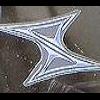-
Recently Browsing 0 members
No registered users viewing this page.
-
-
Recent Topics
-
- 7 comments
- 244 views
-
- 1 comment
- 198 views
-
- 1 comment
- 85 views
-
- 1 comment
- 75 views
-
- 3 comments
- 929 views
-
- 8 comments
- 1,850 views
-
-
-
Recent YouTube Posts


